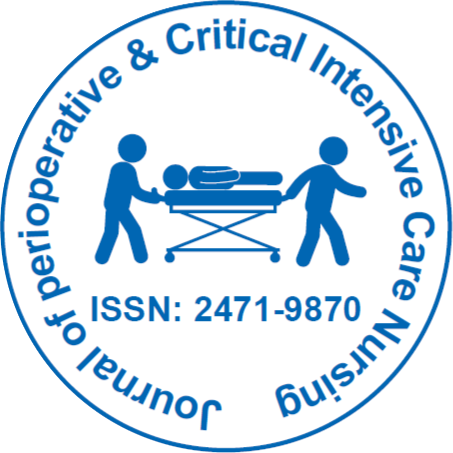
Journal of Perioperative & Critical Intensive Care Nursing
Open Access
ISSN: 2471-9870

ISSN: 2471-9870
Short Communication - (2020)Volume 6, Issue 3
Most common reason of injuries among elder people is falls & fractures. This leads aged people hospitalization and transferring to nursing homes. Since, senior citizens are at higher risk of experiencing bone fracture care must be taken to prevent them from falls. Somehow, healthy diet plan and medication can help elder people out of falls. However, hip fractures cause greatest health issue and greatest number of deaths. The current review discusses the common fractures in senior citizens and care after fall as well as reasons for falls and fractures.
Geriatric Fractures; Falls; Bone density; Osteoporosis; Bone fragility
As people age, bone density decreases and arises orthopedic issues. Mainly these problems can be seen in older people. Somehow, healthy diet helps elder people to overcome this problem. Due to lack appetite seniors cannot consume adequate food which leads to poor nutrition as a result of bone fragility. In order to overcome this, they must be maintained body mass index by taking nutritious food and vitamin supplements that includes calcium, vitamin D suggested by doctor/physician, if necessary. Also, advised to avoid smoking and drinking which diminishes bone strength over time and causes osteoporosis.
Common reasons for falls and fractures in aged people are: medical factors that include nervous weakness, visual impairment, joint and muscle pains, slippery surfaces, poor lighting etc. Due to the physiologic changes of aging as well as common comorbidities, older adults are at high risk for fractures. In addition to chronic glucocorticoid use, many other medications have been implicated in increasing the fracture risk in the elderly [1].
Following are the symptoms of a fracture. Those are Sudden pain, Trouble using or moving the injured area or nearby joints, swelling, obvious deformity, warmth, bruising, or redness. Fractures can be diagnosed by X-ray, Magnetic resonance imaging (MRI), Computed tomography scan (also called a CT or CAT scan) [2].
The most common bones to fracture in falls are hip fractures, femoral shaft fractures, adult forearm fractures, wrist fractures [3]. Geriatric hip fracture is associated with increased morbidity, functional decline, and use of nursing home services, as well as a higher mortality rate: One in 5 hip fracture patients die within a year of the injury [4]. Surgery is preferred for most of patients to avoid complication and stable fixation. Patients will be discharged within 48 hours after the surgery. Immediately, patients should undergo physical therapy and begin rehabilitation. Most common complication after is surgery in seniors is delirium. This can be controlled/prevented by early mobilization and discontinue catheterization as soon as possible. In addition other risks like vision or hearing impairments, malnutrition and polypharmacy. Reorientation to patient’s surroundings and treatment for pain will also help speedy recovery. Intake of high calorific drinks and protein rich food can reduce malnutrition in seniors. Also encouraging them to do physical activities such as weight bearing exercises, walking, cycling etc. may decrease the falls.
Citation: Erica F. (2020) Care for Geriatric Fractures. J Perioper Crit Intensive Care Nurs 6: 157. doi:10.35248/2471-9870.20.6.157
Received: 20-Nov-2020 Accepted: 05-Dec-2020 Published: 10-Dec-2020 , DOI: 10.35248/2471-9870.20.6.157
Copyright: ©2020 Erica F. This is an open access article distributed under the term of the Creative Commons Attribution License, which permits unrestricted use, distribution, and reproduction in any medium, provided the original work is properly cited.